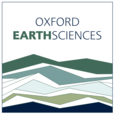Enhanced weathering is a carbon dioxide (CO<sub>2</sub>) mitigation strategy that promises large scale atmospheric CO<sub>2</sub> removal. The main challenge associated with enhanced weathering is monitoring, reporting, and verifying (MRV) the amount of carbon removed as a result of enhanced weathering reactions. Here, we study a CO<sub>2</sub> mineralization site in Consett, Co. Durham, UK, where steel slags have been weathered in a landscaped deposit for over 40 years. We provide new radiocarbon, δ<sup>13</sup>C, <sup>87</sup>Sr/<sup>86</sup>Sr, and major element data in waters, calcite precipitates, and soils to quantify the rate of carbon removal. We demonstrate that measuring the radiocarbon activity of CaCO<sub>3</sub> deposited in waters draining the slag deposit provides a robust constraint on the carbon source being sequestered (80% from the atmosphere, 2σ = 8%) and use downstream alkalinity measurements to determine the proportion of carbon exported to the ocean. The main phases dissolving in the slag are hydroxide minerals (e.g., portlandite) with minor contributions (<3%) from silicate minerals. We propose a novel method for quantifying carbon removal rates at enhanced weathering sites, which is a function of the radiocarbon-apportioned sources of carbon being sequestered, and the proportion of carbon being exported from the catchment to the oceans.
Silicates
,Carbon Dioxide
,Atmosphere
,Weather
,Minerals




